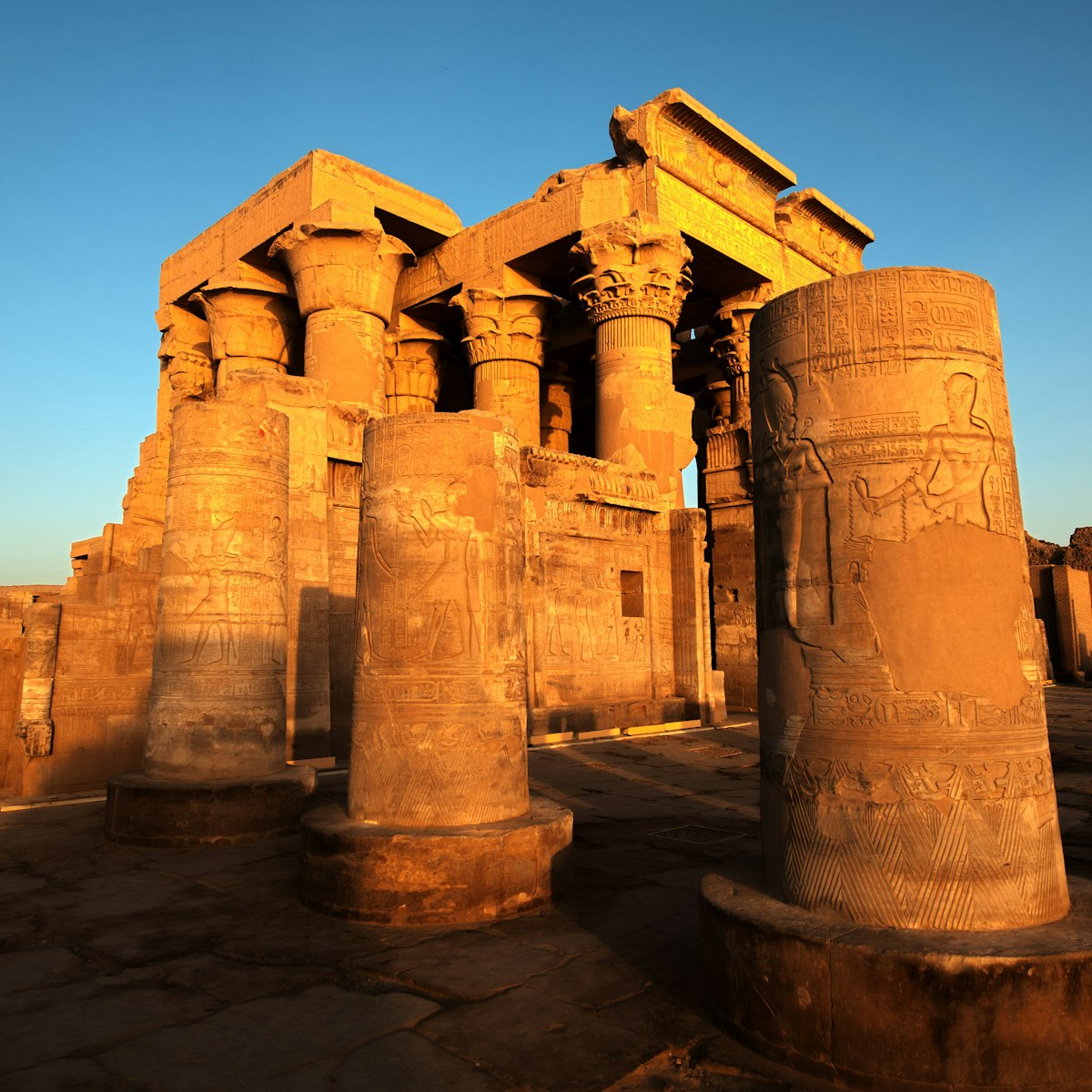Built to honour the goddess Isis, this was the last temple built in the classical Egyptian style. Construction began around 690 BC, and it was one of the last outposts where the goddess was worshipped. The cult of Isis continued here until at least AD 550. The boat leaves you near the Kiosk of Nectanebo, the oldest part, and the entrance to the temple is marked by the 18m-high first pylon with reliefs of Ptolemy XII Neos Dionysos smiting enemies.
In the central court of the Temple of Isis, the mammisi (birth house) is dedicated to Horus, son of Isis and Osiris. Successive pharaohs reinstated their legitimacy as the mortal descendants of Horus by taking part in rituals celebrating the Isis legend and the birth of her son Horus in the marshes. The second pylon leads to a hypostyle hall, with superb column capitals. Note also the reuse of the temple as a Christian church, with crosses carved into the older hieroglyph reliefs, and images of the Egyptian gods carefully defaced. Beyond lie three vestibules, leading into the Inner Sanctuary of Isis. Two granite shrines stood here, one containing a gold statue of Isis and another containing the barque in which the statue travelled, but these were long ago moved to Florence and Paris, and only the stone pedestal for the barque remains, inscribed with the names of Ptolemy III and his wife, Berenice. Take a side door west out of the hypostyle hall to the Gate of Hadrian where there is an image of the god Hapi, sitting in a cave at the First Cataract, representing the source of the river Nile.
East of the second pylon is the delightful Temple of Hathor, decorated with reliefs of musicians (including an ape playing the lute) and Bes, the god of childbirth. South of this is the elegant, unfinished pavilion by the water’s edge, known as the Kiosk of Trajan (‘Pharaoh’s Bed’), perhaps the most famous of Philae’s monuments and one that was frequently painted by Victorian artists, whose boats were moored beneath it.
The whole complex was moved from its original location on Philae Island, to its new location on Agilkia Island, after the flooding of Lake Nasser. A major multinational Unesco team relocated Philae, and a number of other temples that now dot the shores of Lake Nasser. You can see the submerged original island a short distance away, punctuated by the steel columns used in the moving process.
Don't miss the sound and light show at night, the least cheesy of the sound and light 'extravaganzas'. On your feet, look out for the extremely creative guards who will do all in their power to get in your photos, or to point out the hieroglyphs that you can quite clearly see yourself, all for some baksheesh (tip)!








